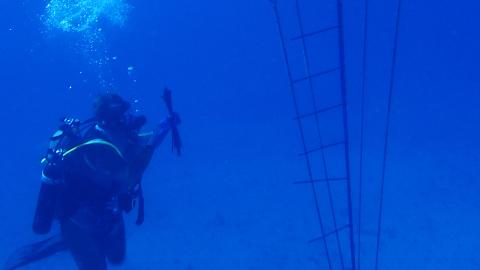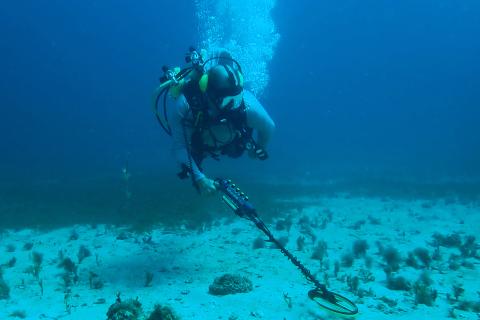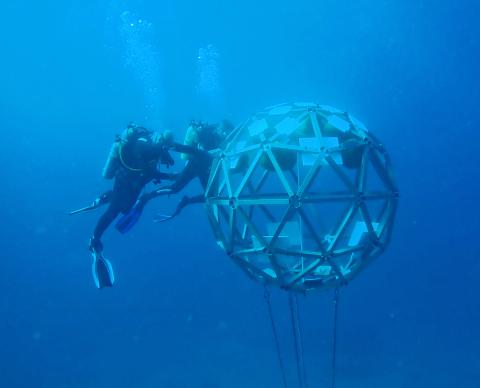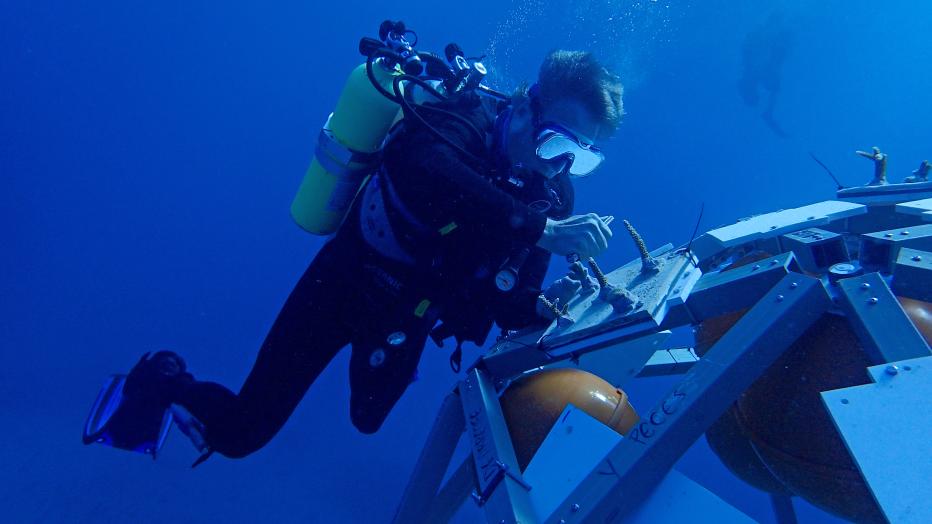
Our professional divers work on the coolest projects. What if we told you that we’re helping to preserve and restore corals and other reef ecology in the waters off Vieques, Puerto Rico using innovative, synthetic mini-reefs referred to as “Coral Arks”?
Why do we need Coral Arks?
Submerged lands under U.S. Department of Defense (DoD) management in tropical marine zones — offshore islands such as Guam, Hawaii, and Puerto Rico — have rich coral reef communities.
Because coral reefs are protected under U.S. law, the DoD may be required to mitigate coral damage resulting from activities such as constructing and managing underwater structures like wharves and piers or cleaning up munitions lying within coral reef communities. This is where Coral Arks come into play.
“It’s vital that we invest into innovative, smart and resilient climate response infrastructure that protects our marine life and communities for the future.”
Protecting reefs in Puerto Rico
In Puerto Rico, the Vieques Naval Training Range (a former munitions training site) is undergoing an extensive cleanup. This environmental restoration work includes removing unexploded munitions while protecting the marine ecosystem.
Before underwater munitions can be removed, they must be evaluated to determine if marine organisms such as threatened or endangered corals are growing on or near them and could be damaged or destroyed when the munitions are removed. If that’s the case, the corals can be detached and moved to new locations that allow the marine life to thrive.
The mini-reef structures — called Coral Arks — provide suitable substrate to support coral translocation efforts, acting as nurseries to assist in coral growth and development of diverse biota that comprise reef ecosystems and are essential to the coral’s long-term health and survival.
While corals could be relocated onto natural hardbottom structures such as rock, the Arks can be relocated elsewhere or moved up or down in the water column to create more ideal conditions for the translocated corals.
A truly cross-disciplinary, collaborative effort
We’re working closely with our client, U.S. Naval Facilities Engineering Systems Command (NAVFAC), as well as scientists from the Naval Information Warfare Center (NIWC) and San Diego State and Harvard Universities (who developed the Arks), with a long-term goal of creating thriving "mini-reef" communities.
These engineering-with-nature-based solutions support the Navy’s conservation and restoration goals while building a better underwater ecosystem. Once re-established, these corals can help protect our coasts from erosion and natural disasters, resulting in an environmental net-benefit.
“It’s vital that we invest into innovative, smart and resilient climate response infrastructure that protects our marine life and communities for the future,” says Jacobs Environmental Solutions Vice President and General Manager Bret Muilenburg. “I look forward to continuing our environmentally diverse work while supporting the mission-critical goals of the Navy.”
All hands on reef
Recently, members of all three of our Jacobs dive groups — Engineering, Scientific and Munitions Response — installed two geodesic spheres (the “Coral Arks”) just offshore of the former training range. Prior to anchoring the Coral Arks to the seafloor, munitions divers conducted a search of the area so that the anchors could be safely installed without encountering underwater munitions.
After that, engineering divers installed the anchors and then used a pulley system to drag the Arks from the sea surface to a depth of about 25 feet (7.6 meters) and attached them to the anchors, allowing them to hover in the water column at an optimal depth for encouraging coral and reef community development.
Once anchored in place, the scientific divers attached limestone plates, each containing an array of transplanted, multi-species coral fragments, to mounting locations on the Arks, as well as instruments designed to record a host of oceanographic conditions.
Going forward, these Arks will continue to be seeded with corals, potentially including those removed from munitions during the cleanup, and regularly monitored for coral growth rates, naturally developed reef biodiversity and overall health, ultimately building a better reef for the future.
-
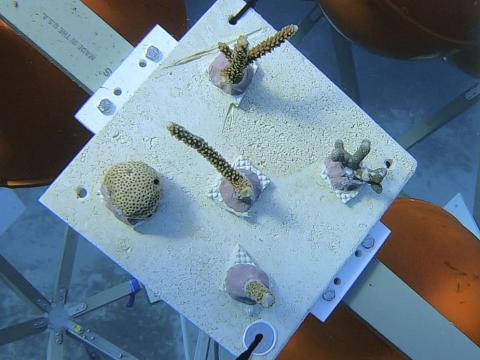
Progress shot: Day 1
-
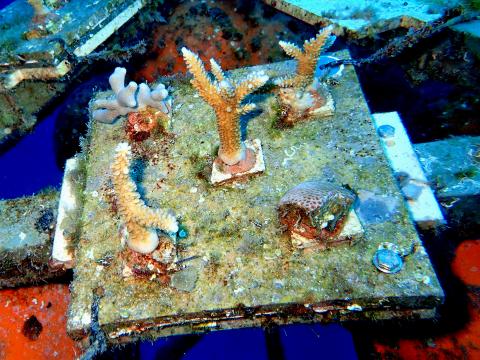
Progress shot: Day 98
Our multifaceted diving groups can address any situation
The Coral Ark project is just one of many exciting projects our divers are working on. This Puerto Rico project involved all three of our dive divisions, which commonly perform other types of activities such as:
- Engineering Divers: Bridge and marine structure inspections, testing, imaging, design, and construction oversight.
- Scientific Divers: Marine ecology assessments and monitoring; threatened and endangered species identification and protection; sediment, water, and biota sampling; and marine ecology mitigation.
- Munitions Divers: Unexploded ordnance (UXO) detection, identification, avoidance, and removal.
Click on these links for more information on the Coral Arks project or specifically the Puerto Rico project So much progress is already being made — the photos above show our coral plates on day 1 and day 98.
You might be interested in...
-
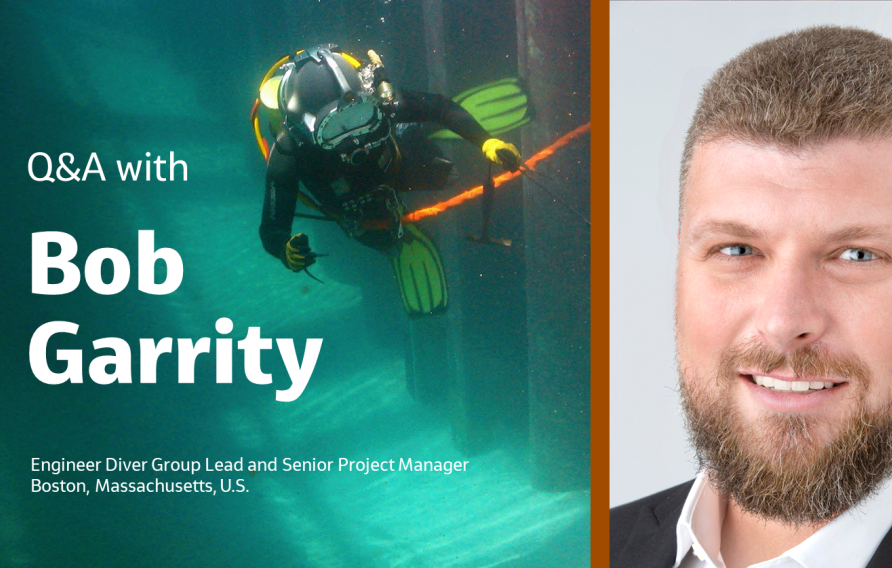 News
NewsTaking a Deep Dive: Q&A with Engineer Diver Group Lead Robert Garrity
Would you rather work in an office, or under the sea? Meet Engineer Diver Group Lead Robert Garrity as we discuss his love of engineer diving, the ocean and his team.
-
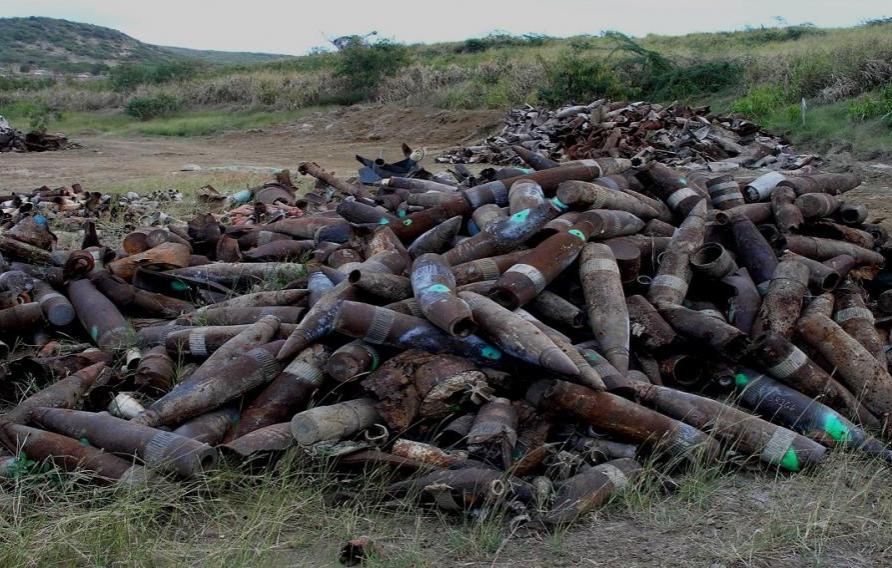 Showcase
ShowcaseVieques Island, Puerto Rico
From the mid-1940s until 2003, the Navy and allied forces tested weapons and conducted other military training activities on the eastern part of Vieques Island, within the 15,000-acre Vieques Naval Training Range, as well as offshore. Since 1999, Jacobs has provided continuous support for the Navy’s environmental and munitions response programs on Vieques Island. We're responsible for investigation and munitions response quality assurance for more than 20,000 acres of land and underwater area potentially containing munitions.
-
 Solution
SolutionNational Security & Defense Market
Working with private sector clients and government agencies across land, air, maritime and space, we provide full life-cycle services supporting national security infrastructure and operations. Whether it’s energy, water, transportation, civil or other critical infrastructure, we reduce carbon emissions and environmental impacts, improve operational efficiency and more – allowing those who protect and defend our communities to focus on making the lives better for those they serve.














































